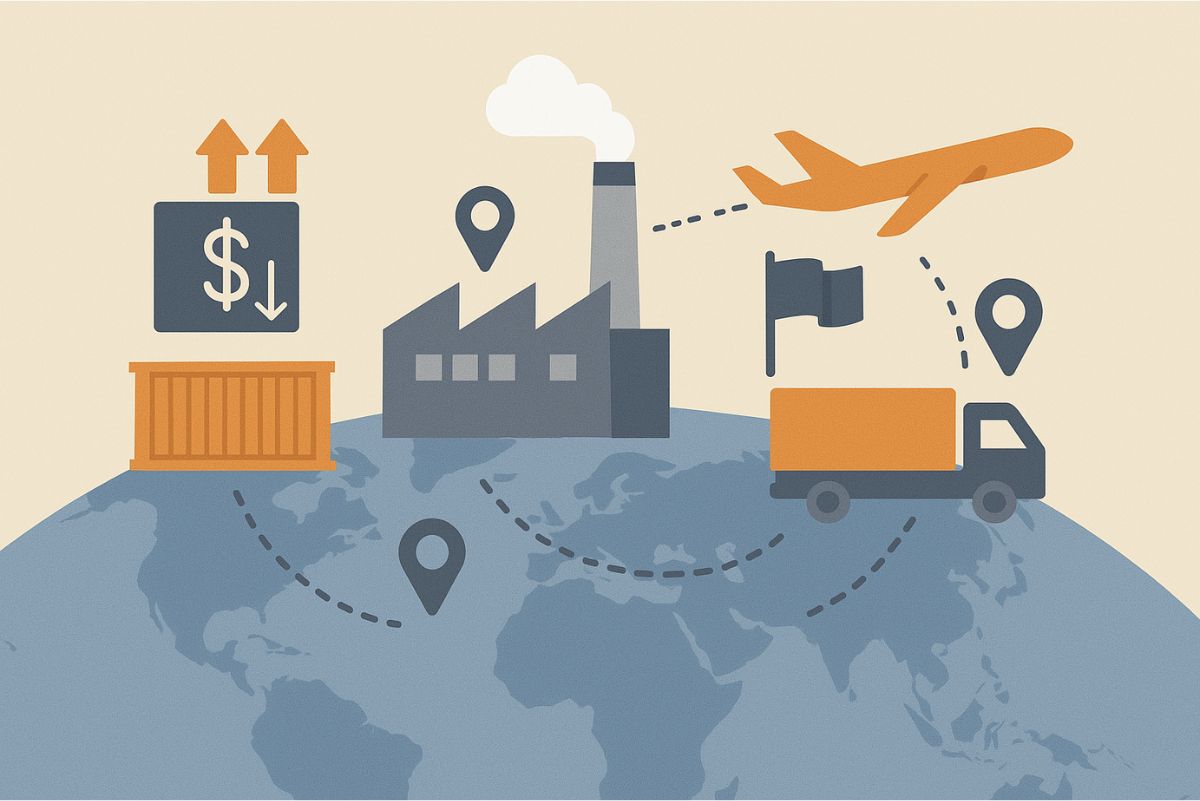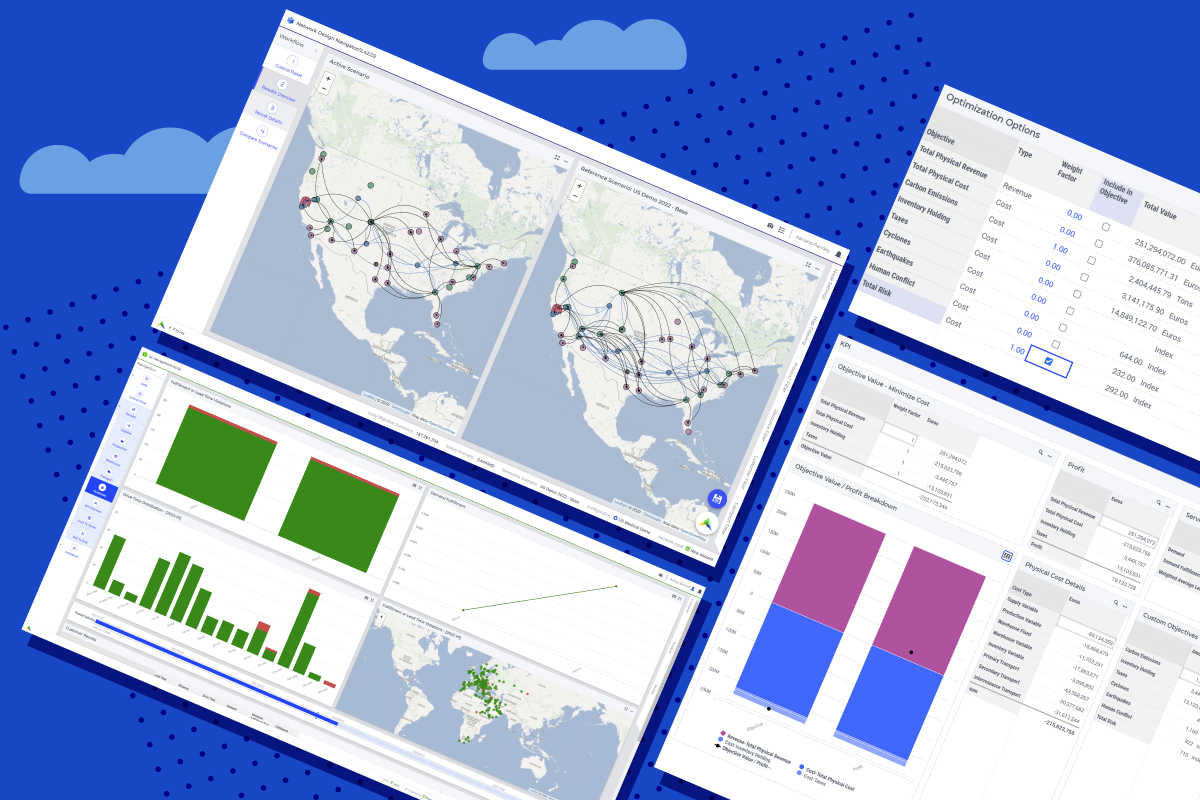Understanding Sensitivity Analysis in Supply Chain Network Design
What is the impact of changes in demand on my overall supply chain performance?
How do production interruptions impact my lead times?
What is the influence of different transportation modes on the overall supply chain?
The questions above are practically ubiquitous, making it crucial for companies to gain valuable insights into how shifts in key variables can truly transform their entire supply chain.
Today, supply chains are in constant change and face a host of unexpected challenges. When it comes to supply chain design and planning, the ability to quickly evaluate various scenarios that drive efficiency and customer satisfaction is essential.
Limiting the impact of supply chain complexity is all about achieving the clarity to first understand, and then take control of the situation. The truth is when seeking improvements in network design, it’s rarely that simple.
Not only are there so many variables, but when making decisions with real consequences for your business and customers, there’s little margin for error.
To help you respond better, sensitivity analysis in network design is used to predict various outcomes of an event within a specific range of variables. It can accurately model how a change in one affects the other variables or outcomes.
So, let’s break it down with some real-world examples.
What is Sensitivity Analysis in Network Design?
Let’s be clear, sensitivity analysis isn’t a theoretical concept. It’s a practical solution that helps evaluate multiple scenarios together, create optimal network designs, and expose hidden risks. It works by taking supply chains that are often more complex and subject to greater volatility and identifying how they become less ‘sensitive’ to disruption.
Clever software founded on math, smart algorithms, and intuitive scenario analysis, is the key to more insightful and resilient supply chain planning. The data visualizations produced are critical in evaluating and adapting quickly to network changes, quantifying opportunities, and making data-backed decisions.
When a network design model is tied to a set of key assumptions, the best way to test them is to focus on the parameters that are subject to uncertainty due to volatility.
Sensitivity analysis considers factors such as:
- Transportation costs
- Inventory costs, production costs
- Lead times
- Demand variability
- Customer service requirements
By running various scenarios based on a change to one factor, holding all others constant, it evaluates the results to discover which assumption has the most influence on the outcome. That way, you know the impact of each in terms of costs and service levels and can make more informed decisions.
Sensitivity Analysis in Practice
By optimizing their supply chain network, companies improve their competitiveness, reduce costs, and improve their ability to respond to changes in demand and supply chain disruptions.
For example, in network optimization, it could examine fluctuations in demand, and how it is influenced by internal and external factors, such as production yield, or an increase in fuel prices.
Use sensitivity analysis to:
- Establishing which elements are most sensitive to change is a logistics operation.
- Grasp the most susceptible variables to make positive adjustments more easily.
- Discover unknown risks that could result from certain changes.
- Plan for potential problems and mitigate hazards.
One of the major benefits of sensitivity analysis is its power to adjust demand by targeting unique customers, products, and locations. Taking specific data for each parameter, it simulates demand in various scenarios and the impact on your resources as demand rises and falls over time.
A typical use is understanding how sensitive customers are to price changes. By knowing the tipping point before price increases negatively affect sales, companies can gauge precisely how much to increase them.
Sensitivity analysis can also be used to model the impact of carbon costs on your supply chain and identify ways to reduce carbon emissions. As the network is optimized for cost, the impact on carbon emissions can be seen. Using advanced optimization technology, you can also optimize for carbon and see the impact on costs, and more importantly, use sensitivity analysis to find the best tradeoff between cost and carbon emission.
9 steps to performing a simple Sensitivity Analysis
Let’s check out some common practices to perform sensitivity analysis.
1. Choose a base case or model.
2. Identify key drivers, rules, or assumptions for testing.
3. Create a sensitivity analysis table.
4. Establish a low to high range for cost drivers and performance thresholds.
5. Choose one of these drivers to vary between two set amounts.
6. Run multiple scenarios to quantify the impact on the supply chain as the dependent variables are adjusted across the range
7. Repeat until all factors are tested independently.
8. Evaluate the results to determine how each driver affects the outcome.
By following these simple steps, you can gain valuable insights into how changes in key variables affect your supply chain performance and make data-backed decisions to optimize your network design.
Faster, highly dependable insights
Sensitivity analysis is a vital tool to answer very specific questions affecting your business. However, on key issues like cost reduction, better service levels, and network resilience, you need to be able to trust those answers implicitly. In reality, it requires a high level of rigor to plan, prepare, and execute properly.
With complex and dynamic networks, the degree of agility offered by manual solutions limits the robustness of the results. Powerful mathematical optimization, and intuitive scenario analysis capabilities, backed by expert knowledge, offer faster, highly dependable insights. AIMMS SC Navigator is one such software that empowers teams to optimize their supply chain and explore potential scenarios and strategies enabling trade-off decision-making like costs, risks, service levels, and CO2 emissions.
To see how it works, schedule a demo today.





